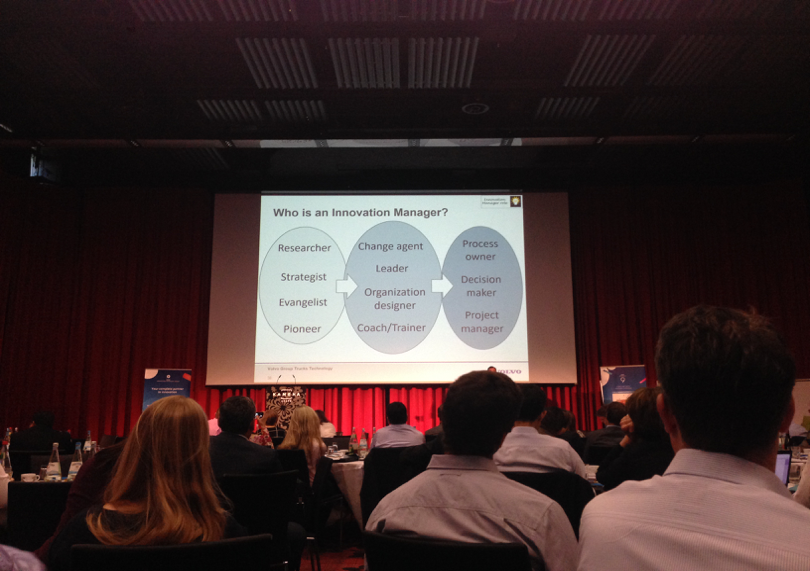Typically, innovation managers are researchers, strategists, evangelists, or pioneers who venture on to become change agents, leaders, organizational designers, coaches, and ultimately fill the seats of process owners, decision makers, and project managers.
That’s quite a journey, isn’t it?

But as it turns out, that isn’t the full story. Not according to Wim Vanhaverbeke (a professor of Digital Innovation and Entrepreneurship at the Surrey Business School), Jim Cheng (Innovation Management Researcher at UHasselt), and Henry Chesbrough (a professor and executive director at the Center for Open Innovation at Berkeley), at least.
In a recent study, and using a LinkedIn dataset, the research trio delved deeper into the topic and published a report on the profile of open innovation managers at multinational companies.
Here are the key points from their findings.
Why is this type of study important?
While open innovation is widely used in organizations large and small and we know a great deal about managing the process, there is surprisingly little information about the person, or team of people, at the helm.
Who are the managers operating in open innovation teams or units?
How long has their tenure been at their company?
What activities do they typically engage in?
These are all open questions.
However, as more and more companies invest in open innovation departments and teams, it’s essential to find the answers to these questions and, from then on, to assign the right person to the job.
Study method at a glance
The research team analyzed a large sample of LinkedIn data for their study. The initial broad search carried out in 2016 revealed that 1,049 managers worldwide had “open innovation” in their job title.
The industries most open to open innovation jobs were consumer goods, pharmaceuticals, telecommunications, chemicals, computer software, food and beverages, consumer electronics, banking, biotechnology, financial services, and automotive.
Next, the team searched for open inovation positions in 2010 - 2012 at one of the 32 large multinationals they selected for their research. Restricting the search to a certain reference period was extremely important as it allowed the team to carry out a careful analysis of these managers’ trajectories before, during, and after their tenure. Ultimately, the sample included 158 managers.
To add more nuance to the study, Vanhaverbeke, Cheng, and Chesbrough also looked at:
- Time spent by the managers in a position;
- The department where each innovation manager from the sample worked;
- The type of work undertaken prior to holding an open innovation position;
- Their tenure in the company; and (if applicable)
- Managers’ new position or title as well as age.
What is the profile of the open innovation manager?
The analysis of the 158 professionals revealed the following:
The average age of an open innovation manager in the sample was 43. Interestingly, very few open innovation managers were younger than 35.
The average tenure at the multinational employing them was 15 years. This was not a surprising finding: Managers who work with innovation should know their company very well to understand its business needs. Additionally, managers should have a strong reputation and seniority so that colleagues take them seriously.
The open innovation managers surveyed remained in their role for an average of 84 months, or seven years, highlighting that the role is a long-term commitment rather than a transitory job.
While 40% of open innovation managers had an R&D background, most came from marketing (14%), operations (9%), engineering (6%), and project management (6%). This finding confirms that innovation implies a marriage of scientific and technical insights.
What tasks do open innovation managers undertake?
The open innovation managers sampled in the study carried out a very diverse range of tasks, typically including a combination of the following:
Training and mentoring
Providing training and mentoring in the necessary open innovation skills to other managers in the company.
Providing strategic linkages to legal and IP expertise in the company
Creating spaces where scientists can safely and freely interact with other experts. For example, Airbus does this in its Protospace, Merck has invested in an Innovation Center, and Nokia has its thriving Innovation Platform.
Technology scouting
Developing tools and processes so other managers can work with outside partners in a fluid and productive way. For example, open innovation managers help set up corporate venturing programs or assemble cross-functional teams that are empowered to do everything, provided they achieve their goals.
Internal culture and communication
Supporting internal openness and developing an internal language; open innovation managers are often also charged with developing metrics.
Securing top-management support
Providing a friendly point of contact and a navigable route into the company. Liberty Global’s innovation team is a great example.
What do open innovation managers subsequently do?
Of the 158 open innovation managers in the sample, an overwhelming majority (72%) stayed within their organization after the reference period. The average tenure of those who stayed in their organization was 15.8 years.
It seems that the longer managers worked in innovation, the less likely they were to move to a different type of job. In addition, the report found that, of the 48 managers who left the field of open innovation, 46% returned to their previous job type.
Conclusion
Although this study was exploratory and has several limitations, it offers valuable insights into one of the most treasured assets companies own: their open innovation workforce.
Understanding this workforce better and making sure it has the necessary resources (including freedom to experiment) is perhaps one of the most important predictors of innovation success, and well worth the investment.
Having a strong open innovation team in place is invaluable. To test the strength of this capability, try asking yourself the following set of questions:
- Have our innovation leaders helped employees get on board?
- Have our innovation leaders reassured employees that open innovation is here to stay?
- Have our innovation leaders helped reshape the broader definition of success within the firm?
- Have our innovation leaders helped enable internal capability building?
"Practitioners always need to balance two distinct sets of concerns: one focused on organizational structures and linkages with external collaborators and one focused on the process of managing implementation internally."
Source: “An Open Invitation to Open Innovation” by Diana Rus, Barbara Wisse and Eric F. Rietzschel (2016)










